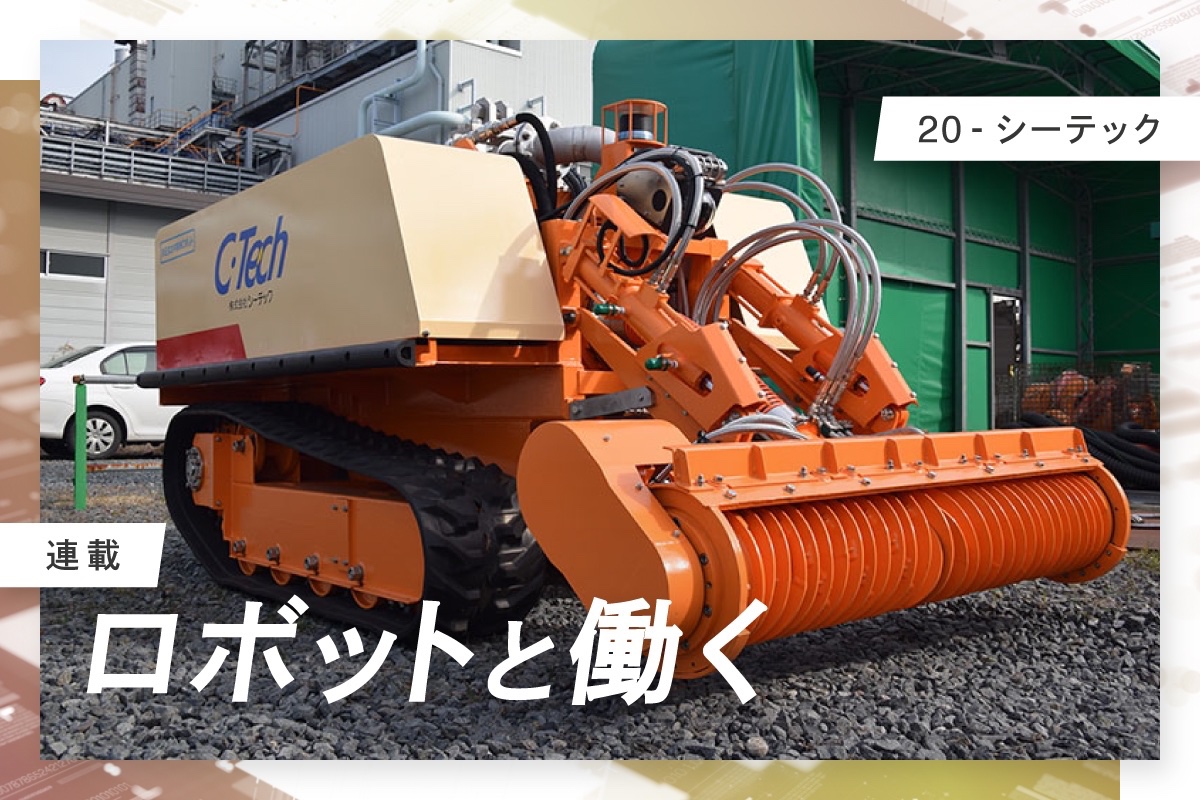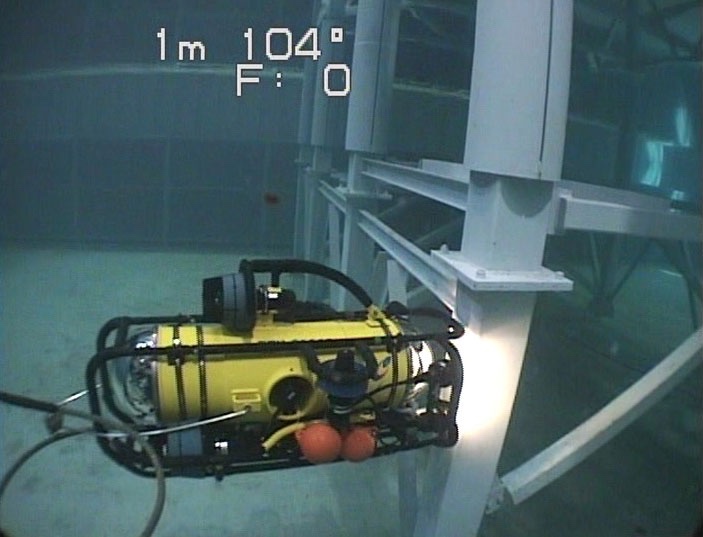

Power plant maintenance: Robots are essential!
-The ability of the “underwater sand removal robot”-
Seatech:
Robots are essential for power plant maintenance
Seatech utilizes underwater robots for maintenance of dams and thermal and nuclear power plants.
-In a situation where the supply and demand for electricity is tight-
Underwater robots are highly valued as a means to inspect power plants without stopping them.
C-Tech wants to expand its underwater maintenance technology beyond the electric power industry.
“Underwater sand removal robot”:
At the bottom of the water, the robot “sucks up sediment and shells from the power plant’s water intake channel to the surface with a hose.”
It can dive up to 10m and suck up 80-90m3 of water mixed with 15% sediment per hour.
Thermal and nuclear power plants:
Power plants use seawater as cooling water.
Dredging of Intake Channel:
If the intake channel is not dredged regularly, it will become clogged with sand and shells and shut down.
The thermal power plant requests the operation of the underwater sand removal robot for 100 days every year.
Currently, we are operating a system of three units, working at power plants such as Chubu Electric Power and JERA.
Newly developed diving robot:
“Is it possible to perform inspections efficiently without draining water?”
The newly developed diving robot fulfilled that wish.
Jointly developed with Chubu Electric:
Identify areas that should be investigated in detail with a diving robot. A diver will later examine it in detail.
It plays an active role in regular inspections that occur every few years, and can “reduce the inspection period from several months to a few days.”
Tested in days:
Since it is powered by cables from the ground, there are no restrictions on its activity limits.
In the future, it will be included in the “inspection and investigation of water supply pipes, etc.”
new switch
Maintenance des centrales électriques : les robots sont indispensables !
-La capacité du “robot de dessablage sous-marin”-
Technologie de la mer :
Les robots sont essentiels pour la maintenance des centrales électriques
Seatech utilise des robots sous-marins pour la maintenance des barrages et des centrales thermiques et nucléaires.
-Dans une situation où l’offre et la demande d’électricité sont tendues-
Les robots sous-marins sont très appréciés comme moyen d’inspecter les centrales électriques sans les arrêter.
C-Tech souhaite étendre sa technologie de maintenance sous-marine au-delà de l’industrie de l’énergie électrique.
“Robot de dessablage sous-marin”:
Au fond de l’eau, le robot “aspire sédiments et coquillages du canal d’amenée d’eau de la centrale électrique jusqu’à la surface avec un tuyau”.
Il peut plonger jusqu’à 10 m et aspirer 80 à 90 m3 d’eau mélangée à 15 % de sédiments par heure.
Centrales thermiques et nucléaires :
Les centrales électriques utilisent l’eau de mer comme eau de refroidissement.
Dragage du canal d’admission :
Si le canal d’admission n’est pas dragué régulièrement, il se bouchera avec du sable et des coquillages et se fermera.
La centrale thermique demande le fonctionnement du robot sous-marin de dessablage pendant 100 jours par an.
Actuellement, nous exploitons un système de trois unités, travaillant dans des centrales électriques telles que Chubu Electric Power et JERA.
Robot de plongée nouvellement développé :
“Est-il possible d’effectuer des inspections efficacement sans vidanger l’eau ?”
Le robot de plongée nouvellement développé a répondu à ce souhait.
Développé conjointement avec Chubu Electric :
Identifiez les zones qui doivent être étudiées en détail avec un robot de plongée. Un plongeur l’examinera plus tard en détail.
Il joue un rôle actif dans les inspections régulières qui ont lieu toutes les quelques années et peut “réduire la période d’inspection de plusieurs mois à quelques jours”.
Testé en jours :
Puisqu’il est alimenté par des câbles depuis le sol, il n’y a aucune restriction sur ses limites d’activité.
À l’avenir, il sera inclus dans “l’inspection et l’enquête des conduites d’alimentation en eau, etc.”
nouvel interrupteur
Kraftwerkswartung: Roboter sind unverzichtbar!
-Die Fähigkeit des „Unterwasser-Sandentfernungsroboters“-
Seatech:
Roboter sind für die Kraftwerkswartung unverzichtbar
Seatech verwendet Unterwasserroboter für die Wartung von Dämmen sowie thermischen und nuklearen Kraftwerken.
-In einer Situation, in der Angebot und Nachfrage nach Strom eng sind-
Unterwasserroboter werden sehr geschätzt, um Kraftwerke zu inspizieren, ohne sie anzuhalten.
C-Tech möchte seine Unterwasser-Wartungstechnologie über die Elektrizitätsindustrie hinaus erweitern.
“Unterwasser-Sandentfernungsroboter”:
Am Grund des Wassers saugt der Roboter „mit einem Schlauch Sedimente und Muscheln aus dem Wassereinlasskanal des Kraftwerks an die Oberfläche“.
Es kann bis zu 10 m tief tauchen und pro Stunde 80-90 m3 Wasser gemischt mit 15 % Sediment aufsaugen.
Wärme- und Kernkraftwerke:
Kraftwerke verwenden Meerwasser als Kühlwasser.
Ausbaggern des Zulaufkanals:
Wird der Einzugskanal nicht regelmäßig ausgebaggert, verstopft er sich mit Sand und Muscheln und wird stillgelegt.
Das Wärmekraftwerk fordert den Betrieb des Unterwasser-Entsandungsroboters für 100 Tage pro Jahr an.
Derzeit betreiben wir ein System aus drei Einheiten, die in Kraftwerken wie Chubu Electric Power und JERA arbeiten.
Neu entwickelter Tauchroboter:
„Ist es möglich, Inspektionen effizient durchzuführen, ohne Wasser abzulassen?“
Der neu entwickelte Tauchroboter erfüllt diesen Wunsch.
Gemeinsam mit Chubu Electric entwickelt:
Identifizieren Sie Bereiche, die mit einem Tauchroboter genau untersucht werden sollten. Ein Taucher wird es später genau untersuchen.
Es spiele eine aktive Rolle bei den regelmäßigen Inspektionen, die alle paar Jahre stattfinden, und könne “die Inspektionsdauer von mehreren Monaten auf wenige Tage verkürzen”.
Getestet in Tagen:
Da es über Kabel vom Boden aus mit Strom versorgt wird, gibt es keine Einschränkungen hinsichtlich seiner Aktivitätsgrenzen.
Künftig wird es in die „Inspektion und Untersuchung von Wasserversorgungsleitungen etc.“ aufgenommen.
neuer Schalter